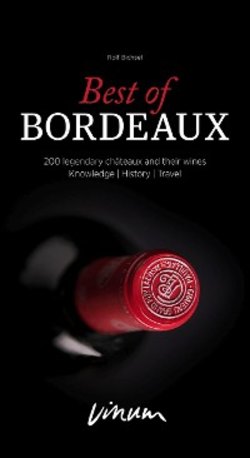Читать книгу Best of Bordeaux - Rolf Bichsel - Страница 44
Оглавление44
History Profit calculations
existence is therefore based on maintaining the pretence that they are similar to
a Grand Cru but available for much less money.
For Bordeaux simply suggests Grand Cru and implies a complicated, exces-
sive, high-quality wine. Instead of unsuccessfully tagging along behind this idi-
otic ideal, winemakers either side of the Grand Cru line (which is a world of its
own) would be better off setting their minds to producing good, fresh, fun wines
for cheerful consumption as an increasing number of winemakers are now do-
ing – modern wines for everyone, rather than being forced to struggle between
heaven and hell at the limit of profitability. If Tuscany can do it, then why can't
Bordeaux – in the Côtes or Entre-Deux-Mers – do the same? Every month Gi-
ronde winemakers throw in the towel, countless producers are surviving by
the skin of their teeth, and average prices in Bordeaux are still no better than
in Beaujolais or Côtes du Rhône. Don't forget that Bordeaux floods the global
market with around a billion (1,000,000,000) bottles of wine every year, more
than 90% of which have nothing in common with Grand Crus, and the mere fact
that some of this is described as Bordeaux Supérieur implies that there must be
plenty of ‘Bordeaux Inférieur'!
Thanks to the Internet, we now have the ability to compare the prices of
world-famous brands in an instant. Online trade in Bordeaux is flourishing (and
for the time being is not upsetting the traditional system, just traditional Bor-
deaux merchants). Grands Crus are available via numerous channels, and the
margins that an intermediary can make are on average relatively modest (un-
less they go into cellaring and create added value from long aging). To this can
be added competition from major (French) distributors who are increasingly
seeking to circumvent the primeur-courtier-merchant system and use Grands
Crus as lures. Special offers arrive in our mailboxes and the (executive) staff
of Bordeaux Grands Crus are the first to run to the supermarket. Things look
rather different at the other end of the scale, with rules that bring to mind the
ills of the agricultural economy. Producers are receiving barely enough money
to survive, sellers are trusting in the power of a recognisable name and fanning
the flames of misunderstanding until they are blazing, slashing the margins of
wines bought cheap which have to compete with Grands Crus, and once again
wine enthusiasts are pulling chestnuts out of the fire and getting their fingers
burnt on illusory bargains. And because the rest of the wine world grumbles
about Bordeaux in public but emulates it in private, there are very few real al-
ternatives.
